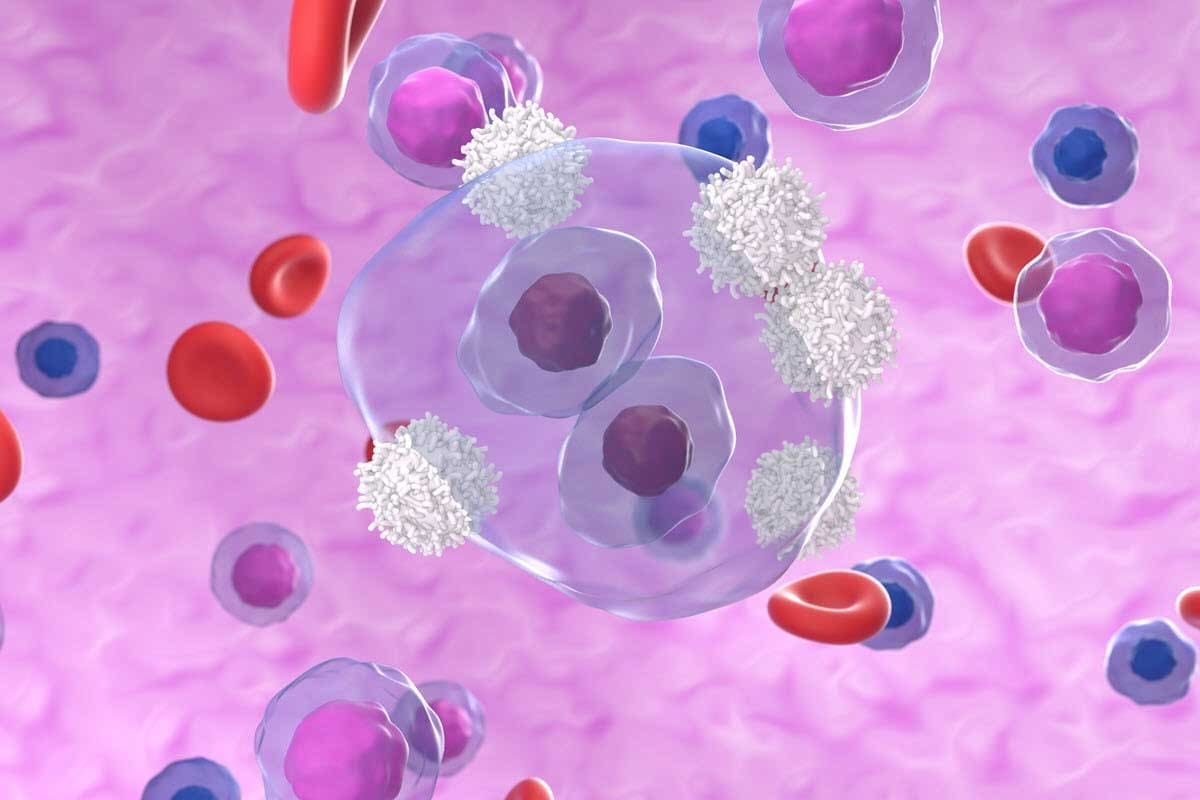Last Updated on November 27, 2025 by Bilal Hasdemir

When you get a melanoma diagnosis, you might wonder: What are my chances of survival? At Liv Hospital, we know how vital it is to offer clear and caring advice every step of the way.
New treatments for melanoma have made a big difference. They’ve helped patients, even those with stage 4 melanoma, live longer. Studies show that these new therapies have boosted five-year survival rates to 30-50% in some cases.
The type and stage of cancer, and whether you’re getting treatment, all affect how long you can live. We’re dedicated to giving top-notch care and support to patients from around the world. Our goal is to offer the best medical results and follow the latest academic guidelines.
Key Takeaways
- Melanoma survival rates have improved with recent advancements in treatment.
- Stage 4 melanoma patients have seen five-year survival rates rise to 30-50%.
- The type and stage of cancer significantly influence life expectancy.
- Treatment presence and type play a critical role in survival outcomes.
- Liv Hospital provides extensive support for international patients.
Understanding Skin Cancer Types and Their Severity
It’s important to know the different types of skin cancer to choose the right treatment. Skin cancer falls into several categories, each with its own traits and severity levels.
Different Types of Skin Cancer
Skin cancer is mainly split into three types: basal cell carcinoma, squamous cell carcinoma, and melanoma. Each type has its own features and risk of spreading.
Basal Cell Carcinoma
Basal cell carcinoma is the most common skin cancer. It grows slowly and usually doesn’t spread to other parts of the body.
Squamous Cell Carcinoma
Squamous cell carcinoma grows faster than basal cell carcinoma. It can spread, but this is rare.
Melanoma
Melanoma is the most dangerous skin cancer. It can spread quickly to other parts of the body, like the lymph nodes, lungs, and brain.
Why Melanoma Is Particualrly Dangerous
Melanoma is aggressive and can spread fast. It’s important to catch it early to increase chances of survival.
Early detection and treatment are key for melanoma patients. We’ll look at what affects survival rates next.
Survival Rates for Different Skin Cancer Types
Survival rates for skin cancer change a lot based on the type and stage. We’ll look at the outlook for basal cell carcinoma, squamous cell carcinoma, and melanoma.
Basal Cell and Squamous Cell Carcinoma Prognosis
Basal cell carcinoma (BCC) and squamous cell carcinoma (SCC) are common skin cancers. Both have high cure rates if caught early. BCC’s five-year survival rate is almost 100% because it rarely spreads.
For SCC, the five-year survival rate is about 90%. But, it can change based on where the cancer is and if it has spread.
Melanoma Survival Rates by Stage
Melanoma is the most dangerous skin cancer because it can spread fast. Survival rates for melanoma depend a lot on the stage at diagnosis.
Early Stage (0-II) Survival Statistics
Early-stage melanoma (stages 0-II) has a high five-year survival rate. It’s almost 100% for stages 0 and I. Even at stage II, the survival rate is good, from 80% to 95%, based on the tumor’s details.
Advanced Stage (III-IV) Survival Statistics
Advanced-stage melanoma (stages III-IV) has lower survival rates. At stage III, the five-year survival rate is between 40% and 78%, depending on lymph node involvement. Stage IV melanoma, with cancer in distant organs, has a worse outlook. The five-year survival rate is between 15% and 20%.
Knowing these survival rates shows how critical early detection and treatment are. If you’re worried about skin cancer, talk to a healthcare professional for advice and care.
How Long Can You Live With Skin Cancer: Factors That Influence Survival
Understanding what affects survival in skin cancer patients is key. When someone is diagnosed with skin cancer, many things can change their life expectancy. We’ll look at these factors to understand what affects survival rates.
Stage at Diagnosis
The stage of skin cancer diagnosis is very important. Early detection usually means better treatment outcomes. But, late diagnosis can lead to a worse prognosis because the cancer might spread.
Early detection is key to improving survival rates. For example, melanoma caught early has a much better survival rate than stage IV melanoma.
The American Cancer Society says the 5-year survival rate for melanoma is about 99% if caught early. But, this rate drops a lot as the disease gets worse. Knowing the stage helps plan the right treatment and predict the outcome.
Location and Characteristics of the Cancer
The location and type of skin cancer also matter a lot. Cancers in certain areas, like the face or scalp, can be harder to treat. The type of skin cancer, like melanoma, basal cell carcinoma, or squamous cell carcinoma, also affects survival. Melanoma, being the most aggressive form, requires prompt and aggressive treatment.
The thickness of the tumor and whether it has ulceration are also important. These factors influence survival.
Patient Age and Overall Health
Patient age and overall health are also key factors. Older patients might have a poorer prognosis due to weaker immune systems and other health issues. Younger patients usually have better survival rates because they are healthier and can handle treatments better. A thorough assessment of the patient’s health helps tailor the treatment plan. Other health conditions can also affect treatment success and survival.
It’s important for patients to work closely with their healthcare providers. This way, they can understand their prognosis and get a treatment plan that fits them. By considering these factors, healthcare providers can give more accurate predictions and effective treatments.
Early-Stage Melanoma: High Survival Rates and Prognosis
People with early-stage melanoma have a good chance of survival. Early detection is key to successful treatment and a better outcome.
Stage 0-II Melanoma Life Expectancy
For those with Stage 0-II melanoma, the outlook is bright. The five-year survival rate for localized melanoma is about 99% if caught early. This shows how vital early detection is.
| Stage | Five-Year Survival Rate |
|---|---|
| Stage 0 | 99% |
| Stage I | 99% |
| Stage II | 80-90% |
Treatment Options and Their Impact on Survival
There are many effective treatments for early-stage melanoma. These treatments greatly improve survival chances. Treatment plans often include surgery and other therapies.
Surgical Approaches
Surgery is the main treatment for early-stage melanoma. Wide local excision is a common method. It removes the melanoma and some normal skin around it. This helps ensure all cancer cells are gone, lowering the chance of it coming back.
Adjuvant Therapies
Adjuvant therapies are sometimes used to prevent melanoma from coming back. Immunotherapy and targeted therapy are examples. They can help improve the prognosis.
Stage 4 Melanoma: Understanding the Advanced Disease
Stage 4 melanoma is the most advanced form of skin cancer. It has spread to distant organs or lymph nodes. This makes treatment harder.
Progression to Stage 4
Melanoma turns into stage 4 when cancer cells spread through the body. They travel through the bloodstream or lymphatic system. This creates new tumors in other parts of the body.
Common Sites of Metastasis and Their Impact on Prognosis
Melanoma can spread to several organs. Each site affects the patient’s chances of survival differently. Knowing these sites is key to managing the disease.
Lung Metastasis
Lung metastasis is common in stage 4 melanoma. It can cause breathing problems. This makes treatment harder and affects survival chances.
Brain Metastasis
Brain metastases are tough to deal with. They can cause neurological symptoms and lower quality of life. Treatment options include surgery, radiation, and systemic therapies.
Liver and Bone Metastasis
Liver and bone metastases are also common. Liver involvement can cause metabolic issues. Bone metastases can lead to pain and fractures. Both need careful management to improve quality of life.
| Site of Metastasis | Common Symptoms | Impact on Prognosis |
|---|---|---|
| Lungs | Cough, shortness of breath | Complicates treatment, affects overall survival |
| Brain | Headaches, neurological deficits | Significantly impacts quality of life, poor prognosis |
| Liver | Abdominal pain, jaundice | Affects metabolic function, complicates treatment |
| Bones | Pain, risk of fractures | Impacts mobility, affects quality of life |
Understanding stage 4 melanoma and its spread is vital for treatment. While survival chances are tough, research and new treatments offer hope. They aim to improve survival rates and quality of life.
Untreated Stage 4 Melanoma: Timeline and Progression
It’s important to know how untreated stage 4 melanoma progresses. We’ll look at how fast it can spread and what affects its speed. This info helps in making care and treatment choices.
How Quickly Untreated Melanoma Advances
Untreated stage 4 melanoma can spread quickly to other parts of the body. The speed of progression varies among individuals, based on several factors.
Factors Affecting Progression Speed
Several things can affect how fast stage 4 melanoma spreads. These include the cancer’s genetics, the patient’s health, and other medical conditions. Knowing these factors helps predict the disease’s spread.
Warning Signs of Rapid Progression
It’s key to recognize signs of fast progression early. Symptoms like severe pain, significant weight loss, and neurological changes are warning signs. Patients should seek medical help quickly if they notice these symptoms.
Expected Survival Without Medical Intervention
Survival rates for untreated stage 4 melanoma are generally low. Without treatment, the outlook is poor, with survival rates dropping sharply.
Statistical Outcomes
Statistics show that patients with untreated stage 4 melanoma usually live about 6-9 months. But, this time can vary a lot. It’s important to look at these stats with overall health and other factors in mind.
Individual Variation Factors
Things like age, health, and the melanoma’s characteristics can greatly affect survival without treatment. Every patient’s case is different, and these factors should be considered when talking about prognosis.
While these stats give a general idea, outcomes can vary a lot. Getting medical care is very important. Treatment can help improve survival chances and quality of life.
Modern Treatments Improving Stage 4 Melanoma Survival
New treatments have greatly improved survival chances for stage 4 melanoma patients. We’re seeing big changes in how this serious disease is treated. New therapies are showing great promise.
Immunotherapy Breakthroughs
Immunotherapy has changed the game for stage 4 melanoma. It uses the body’s immune system to fight cancer. This approach has shown great promise in improving patient outcomes.
Checkpoint Inhibitors
Checkpoint inhibitors are a key part of immunotherapy for stage 4 melanoma. Drugs like pembrolizumab and nivolumab help the immune system attack cancer cells better.
Combination Approaches
Using different immunotherapies together or with other treatments has shown even better results. For example, combining checkpoint inhibitors with other therapies has improved response rates and survival in stage 4 melanoma patients.
Targeted Therapies and Their Results
Targeted therapies have also played a big role in treating stage 4 melanoma. They target specific genetic mutations that cause cancer to grow. For instance, BRAF inhibitors are effective against melanomas with BRAF mutations.
| Treatment Type | Mechanism | Example Drugs |
|---|---|---|
| Checkpoint Inhibitors | Release brakes on immune system | pembrolizumab, nivolumab |
| BRAF Inhibitors | Target BRAF mutations | vemurafenib, dabrafenib |
How Treatment Has Changed the Prognosis Landscape
New treatments have greatly changed the outlook for stage 4 melanoma patients. While it’s a serious disease, these therapies have improved survival rates and quality of life. As research continues, we expect even better treatments to come.
We’re hopeful about the future of stage 4 melanoma treatment. Ongoing research and clinical trials are promising to bring more innovative solutions.
Living With Advanced Melanoma: Quality of Life Considerations
Living with advanced melanoma means tackling both physical and emotional challenges. As the disease gets worse, patients face many hurdles. These include managing symptoms and dealing with the emotional impact of the diagnosis.
Palliative Care Options
Palliative care is key for improving life quality in advanced melanoma patients. It aims to ease symptoms, pain, and stress. Palliative care teams work with patients to manage their symptoms, boosting their overall well-being.
Some main parts of palliative care are:
- Pain management
- Symptom control
- Emotional and psychological support
- Spiritual care
Support Systems and Resources
Support systems and resources are vital for those with advanced melanoma. They include family, friends, support groups, and online resources. Connecting with others who get what you’re going through can offer comfort and advice.
| Support System | Description | Benefits |
|---|---|---|
| Family and Friends | Emotional support and practical help | Reduced feelings of loneliness, assistance with daily tasks |
| Support Groups | Connecting with others experiencing similar challenges | Emotional comfort, sharing of experiences and advice |
| Online Resources | Access to information, forums, and educational materials | Informed decision-making, community connection |
Conclusion: The Importance of Early Detection and Treatment
It’s key to know how early detection and treatment can save lives. We’ve learned that how long you live with skin cancer depends a lot on when it’s found. Early treatment can make a big difference, while waiting too long can lead to serious problems.
Today, we have better treatments like immunotherapy and targeted therapies for advanced melanoma. But, the most important thing is catching it early. Spotting the signs of skin cancer and getting help fast can greatly improve your chances.
If you’re worried about skin cancer, learning about its signs and risks is a good start. You can find lots of helpful info on cancer warning signs. By staying informed and taking action, you can boost your chances of beating melanoma.
FAQ
How long can you live with untreated stage 4 melanoma?
Living with untreated stage 4 melanoma varies a lot. It depends on many things. Generally, the outlook is not good, with survival ranging from a few months to over a year.
What are the survival rates for different types of skin cancer?
Basal cell and squamous cell carcinomas have high survival rates if caught early. They are often over 90%. Melanoma survival rates are different, with early stages much better than late stages.
How does the stage at diagnosis affect survival in skin cancer patients?
The stage at diagnosis is very important. Early-stage skin cancers, like melanoma, have much better survival rates. Catching it early is key to a better outcome.
What are the common sites of metastasis for stage 4 melanoma, and how do they impact prognosis?
Stage 4 melanoma often spreads to the lungs, brain, liver, and bones. Where it spreads and how much affects survival. Brain metastasis is often the worst.
How have modern treatments improved survival for stage 4 melanoma patients?
New treatments like immunotherapy and targeted therapies have greatly improved survival for stage 4 melanoma patients. They help the immune system fight cancer or target cancer mutations.
What role does palliative care play in managing advanced melanoma?
Palliative care is vital for advanced melanoma. It focuses on improving life quality. It deals with symptoms, emotional support, and other needs for complete care.
Can you survive melanoma skin cancer, and what factors influence survival?
Yes, survival is possible, mainly with early detection and treatment. Survival depends on the stage, cancer location and type, and overall health.
How quickly can untreated melanoma progress?
Untreated melanoma can grow fast. How fast it grows depends on the cancer’s aggressiveness and the patient’s health.
What are the treatment options for early-stage melanoma, and how do they impact survival?
Early-stage melanoma treatments include surgery and adjuvant therapies. These treatments greatly improve survival by removing the cancer and treating any remaining cells.
How long can you live with melanoma without treatment?
Without treatment, life expectancy varies a lot. For stage 4 melanoma, the outlook is generally poor. This highlights the need for early treatment.
References
- AIM at Melanoma Foundation: https://www.aimatmelanoma.org/melanoma-101/how-melanoma-is-diagnosed/prognosis/
- Cancer Research UK: https://www.cancerresearchuk.org/about-cancer/melanoma/survival
- National Center for Biotechnology Information (NCBI) / PMC: https://pmc.ncbi.nlm.nih.gov/articles/PMC10796594/
- Cancer Treatment Centers of America (CTCA): https://www.cancercenter.com/cancer-types/melanoma/types/metastatic-melanoma








